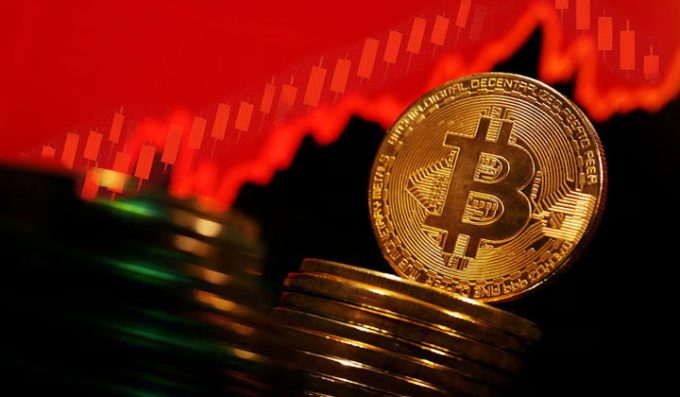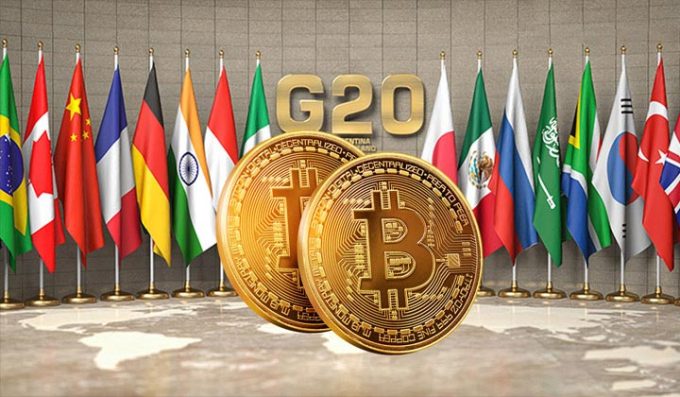
On 30th September 2025, the European Systemic Risk Board under the European Union made a daring recommendation to ban multi-issuance stablecoins, which would affect issuers like Paxos and Circle.
Although the proposal hasn’t been officially backed, the push for restrictions sends a clear message; the European Union might be joining the de-dollarization gang sooner than later, which has long been talked about by several countries, especially the BRICS nations.
It’s no news that dollar-pegged stablecoins have dominated the stablecoin market, accounting for roughly 99% of all transactions, even though most transactions happen outside the United States. Euro-denominated stablecoins, on the other hand, account for just 1%.
This disparity has raised some concerns among EU member nations, but will the push for an outright ban fix this gap? Could the adoption of multicurrency stablecoins put an end to the dominance of dollar-pegged tokens? This blog delves into key details about the proposal and the potential benefits of multicurrency stablecoins.
The Fear of Multi-Issuance and Dollar-Pegged Tokens in Detail
The ESRB has been wary of the import of dollar-denominated stablecoins from non-EU blocs in the EU, and the recent proposal doesn’t come as a shock. Even the European Central Bank is championing this move, as both EU watchdogs believe that stricter restrictions will preserve financial stability in the region, but that’s not all there is.
Under the multi-issuance stablecoin model, two or more entities can issue the same stablecoin in different jurisdictions. Both stablecoins can be pegged to the same currency and are even interchangeable on the Blockchain network.
However, the backing reserves and supervisory differ. For instance, the entity in the EU may be subject to laws that are less strict than the laws in the non-EU zone.
The ESRB believes that this rule doesn’t create a level playing field. In the event of a run on the asset, investors will choose to redeem their stablecoins in the EU since it has the strongest safeguards.
The problem is that reserves held in the EU may not be sufficient to meet the demand, creating a liquidity shortfall in the bloc, with knock-on effects on payment systems.
The Drawback of the Multi-issuance Model
So, let’s point out why regulators might want to ban multi-issuance.
1. Regulatory Arbitrage
Aside from liquidity problems and redemption risks, European policymakers argue that the model will create regulatory arbitrage. If a part of the token’s issuance and reserves sit outside EU supervision, holders may be exposed to weaker oversight, sabotaging consumer protection.
Multi-issuance will allow non-EU entities to benefit from EU markets while not being subjected to EU laws, such as MiCA.
2. Undermine MiCA’s Objectives
Also, the current model undermines MiCA’s objectives and vision. The MiCA framework regulates cryptocurrency in the EU, including operational standards and reserve requirements, and the multi-issuance model blurs the line of who is and can be subject to MiCA.
Judith Arnal, a board member of the Bank of Spain, revealed that multi-issuance stablecoins expose a deeper challenge for MiCA’s credibility as a global benchmark if non-EU entities aren’t bound by the same standards as their EU counterparts.
3. Loss of Monetary Sovereignty / Currency Substitution
When a single-currency-backed stablecoin enters different economies, the country is reducing demand for non-U.S. government bonds to favor Treasuries.
For example, IMF data shows that the United States bonds backing Tether and Circle exceed Saudi Arabia’s government debt. In essence, dollar-pegged stablecoins will strengthen the exorbitant privilege of the USD.

What about currency substitution? The issue with overwhelmingly dollar-backed stablecoins is that they have the power to coup the native currency.
For example, FSB’s “Cross-border Regulatory and Supervisory Issues of Global Stablecoin Arrangements in EMDEs” warns that foreign-currency-pegged stablecoins may displace local currency in payments and store-of-value roles, weakening the link between monetary policy and domestic financial conditions.
When a stablecoin is pegged to a currency other than the native money and gains widespread use, it can lead to a fragile financial infrastructure. Above all, it can cause currency substitution, undermining the country’s monetary sovereignty.
For example, in an inflationary environment or with limited trust in the domestic currency, agents might prefer dollar-pegged stablecoins (e.g., USDT or USDC) over local money.
The report notes that a stablecoin might become systemic in a small economy even before it is viewed as systemic in its home jurisdiction — limiting the local central bank’s ability to regulate it.
In this scenario, the central bank loses control over money supply, interest rates, and liquidity because the stablecoin operates outside its operations and may move capital flows independently of domestic policy.
EU’s Next Move: How Ban Could Pave the Way for a Regulated Multicurrency Stablecoins
The EU has already put a contingency plan to address the dollar dominance of the stablecoin market. By maintaining tight control of crypto and stablecoin development, the bloc believes it’s on the right path, as it prepares to launch the digital euro.
European Central Bank President Christine Lagarde told legislators last week to prepare for “safeguards and robust equivalence regimes” from foreign issuers of stablecoins to preserve financial stability in the region.
One of the major steps proposed by the EU is to subject non-EU entities to EU laws and holding reserves in the EU, thereby leveling the playing field for everyone.
Holding reserves in the euro may be a good starting point in the pursuit to end the dollar crypto monopoly, but the EU might need something more.
Dollar-pegged stablecoins have been controlling crypto’s financial rails, and the lack of growth of credible alternatives in the euro or even the yuan will only strengthen the USD’s dominance in the years to come.
Dollar-pegged tokens are replicating TradFi conditions in crypto, as reserves sit in the US money markets. The monopoly is something that should be thoroughly addressed.
This dependency should be neutral and not concentrate on a single sovereign money market. As mentioned, holding reserves in the EU is a starting point, but the EU needs more.
What can the EU do then? The bloc should start considering euro-pegged stablecoins. Japan is already making a parallel move, with a proposed launch of a yen-backed stablecoin. JPYC was recently approved, marking one of the first regulated fiat-backed crypto tokens in Asia.
Hong Kong is making a similar move with its new licensing regime that will give the Hong Kong dollar more leverage through strict supervision, redemptions, and disclosures.
However, it’s not just about approving it on paper – it’s about making sure these local currency-backed tokens show up as deep base pairs on major exchanges and are actually used in remittances.
Benefits of Multicurrency Stablecoins
1. Strengthening Monetary Sovereignty
Multicurrency stablecoin is a powerful concept that will create a truly global digital asset that isn’t anchored to the fiscal policies of a single nation (in this case, the United States).
Currently, most non-U.S. economies depend on the dollar’s stability, meaning an unstable dollar could wreck economies, especially the less buoyant ones. Besides, over-reliance on the dollar gives American regulators influence over the direction of the global crypto markets.
A euro-based token or multicurrency stablecoin can boost the value of the euro within the EU, enhance liquidity, and give the local money a stronger presence in the crypto economy. Dependency on dollars will reduce significantly.
2. Less Volatility and a Stable Financial System
The dollar is the world’s reserve currency, but what happens to it during uncertainties, like a government shutdown or when unfavorable economic policies are implemented? Countries dependent on the dollar will feel the effect as well. When a country’s economy is less dependent on a single currency like the dollar, it creates a less volatile, balanced financial system.
Multicurrency stablecoins are more resilient during economic uncertainty. If the dollar weakens, the country can fall back on other local-denominated currencies to cushion the effect. It’s a known fact that diversification acts as a buffer against uncertainties.
3. Encourage Cross-Border Payments
Suppliers and merchants on two different continents can initiate faster and lower-cost transfers if stablecoins are settled in currencies other than USD. The friction of conversion is eliminated if a multicurrency stablecoin is adopted. For example, a European who wants to deal with an Asian supplier could settle payments in yen or euro-backed stablecoin, which minimizes potential delays and FX costs.
Given that Europe has a comprehensive and robust regulatory framework in MiCA, issuers will have a clearer path to compliance. This means multicurrency stablecoins will thrive properly, ensuring transparency and auditability. With MiCA, the digital euro will be an emerging force in the stablecoin market, facilitating transactions on global exchanges with oversight and consumer protection in the mix.
Conclusion
Multicurrency stablecoins are the future of digital money because they aren’t confined to a single monetary system. The ECB and ESRB call for stricter oversight and a stablecoin reserve in euros, reflects the dire need to diversify and pivot from a dollar-backed stablecoin to a multicurrency system to preserve financial stability in the region.
Where Europe’s advantage lies is in its legal clarity, which will introduce safe and compliant fiat-backed alternatives to dollar stablecoins.
Under proper and comprehensive regulatory frameworks like MiCA, multicurrency stablecoins like euro-pegged tokens could bring real diversity to global trade and finance.
The result? Reduced reliance on dollar payments, increased liquidity, and a stable economy in the bloc. True sovereignty could finally be unlocked.
You need to login in order to Like




















Leave a comment